X-ray CT Applications by Industries
Discover what X‑ray CT can do in your field.
Pharmaceuticals
X‑ray CT (computed tomography) can reveal various defects in tablets, pills, and capsules, such as cracks, voids, coating non-uniformity or delamination, aggregates, phase change, and degradation. The defects can cause changes in drug dissolution and release rates, but these defects might be missed if you grind these tablets and capsules and only analyze them chemically. X‑ray CT images can provide insights into what might be the root cause of underperforming drug products in the product development and troubleshooting processes.
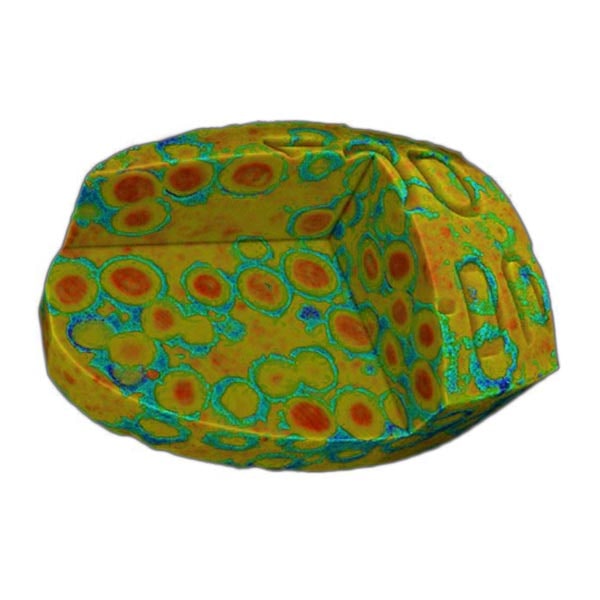
Food
X‑ray CT is used in various areas of the food industry, from studying grains and crops to analyzing fat, protein, and water distribution in meat products and processed foods. Proofing and baking processes of baked goods can also be studied using time-resolved X‑ray CT measurements. X‑ray CT can also be used to study various food coatings, salt grain distribution, etc.
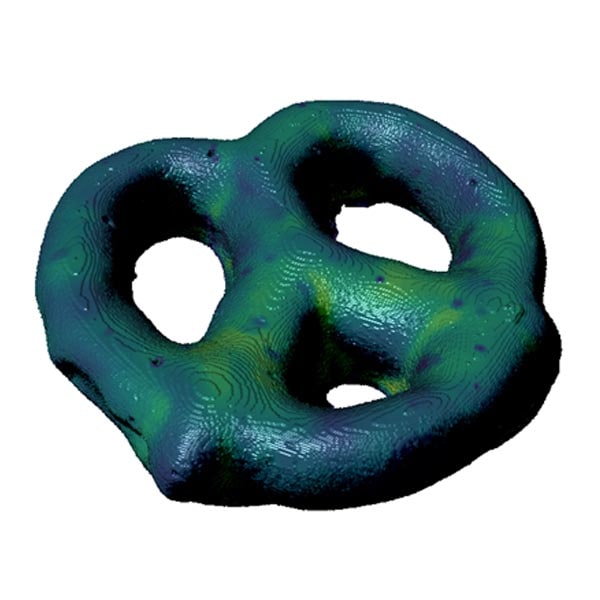
Food
X‑ray CT is used in various areas of the food industry, from studying grains and crops to analyzing fat, protein, and water distribution in meat products and processed foods. Proofing and baking processes of baked goods can also be studied using time-resolved X‑ray CT measurements. X‑ray CT can also be used to study various food coatings, salt grain distribution, etc.

Foams and composites
Foams and composites often have micron-sized structures such as small pores, cells, or fibers distributed in the matrix. While optical and electron microscopes produce nanometer-resolution images of these structures, they are mostly limited to two dimensions. This limitation makes it challenging to do even a simple analysis, such as cell size distribution, because the cell size appears differently in a 2D image depending on where the cell was sectioned for the imaging. X‑ray CT provides 3D images and enables a full assessment of cell sizes, fiber orientation, etc.
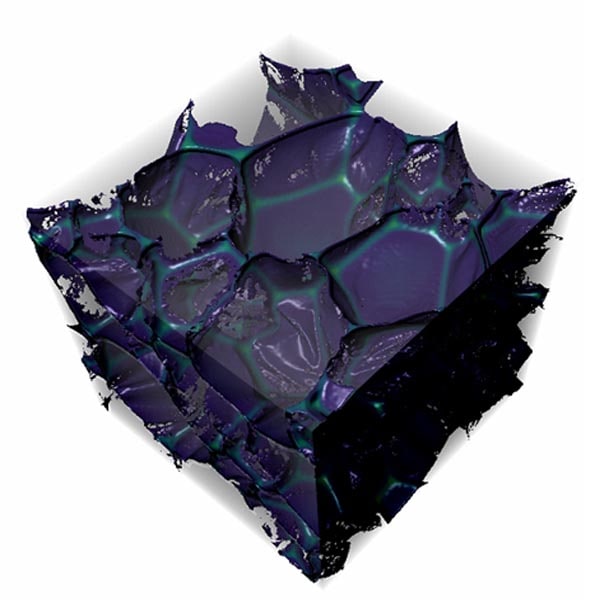
Life science
Imaging analysis of plants, insects, and animals is an essential part of life science. However, the sample preparation, such as sectioning, drying, and coating required for optical and electron microscopy, can alter organic and delicate samples or provide only two-dimensional information. Meanwhile, X‑ray CT can provide 3D images nondestructively and is widely used to understand insects and animals’ organs or bone structures, plant phenotypes, tree and fruit pest infestation, etc. Owing to its non-destructive nature, X‑ray CT can also be used for time-resolved imaging to study germination or infestation processes.
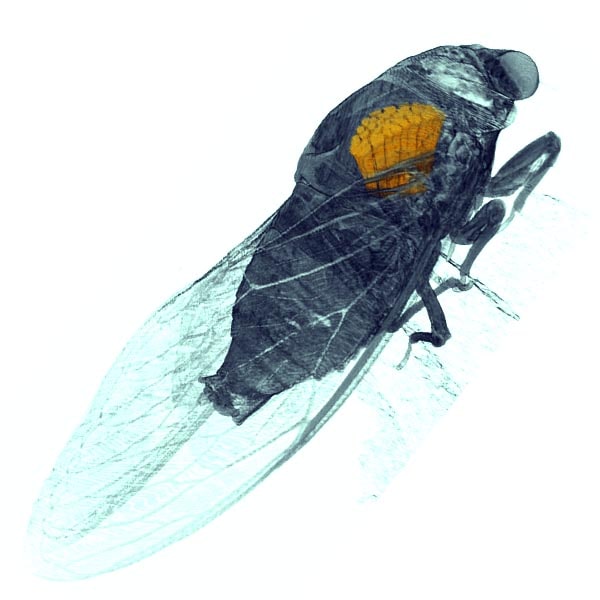
Geology
X‑ray CT is often used to study rocks and fossils. X‑ray CT analysis results can help analyze phase fraction of rocks, porosity or pore network in sandstones, oil and water distribution in drill cores, and support paleontology by analyzing fossils quickly and non-destructively. It is also used to study weathering process of stones used in building structures, bricks, and concrete.
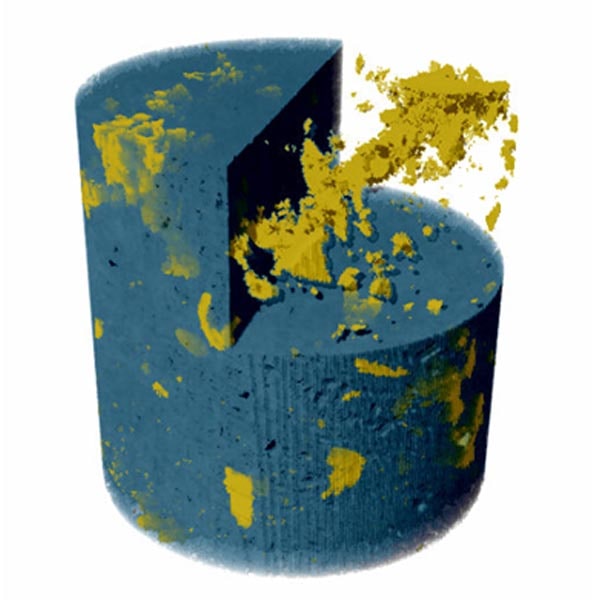
Metrology
X-ray CT can scan the entire volume of various parts in 3D. This 3D volume imaging capability offers a unique advantage over other dimensional measurement techniques, such as coordinate measuring machines (CMMs) and optical scanners. In addition to the analysis of external shapes of parts, X-ray CT enables the analysis of internal structures and defects such as voids, cracks, and inclusion. This technique can be used for dimensional analysis, including nominal versus actual comparison, GD&T (Geometric dimensional and tolerancing) analysis, and is becoming a more commonly used testing tool as additive manufacturing technology (a.k.a. 3D printers) makes complex internal structures easy to manufacture.
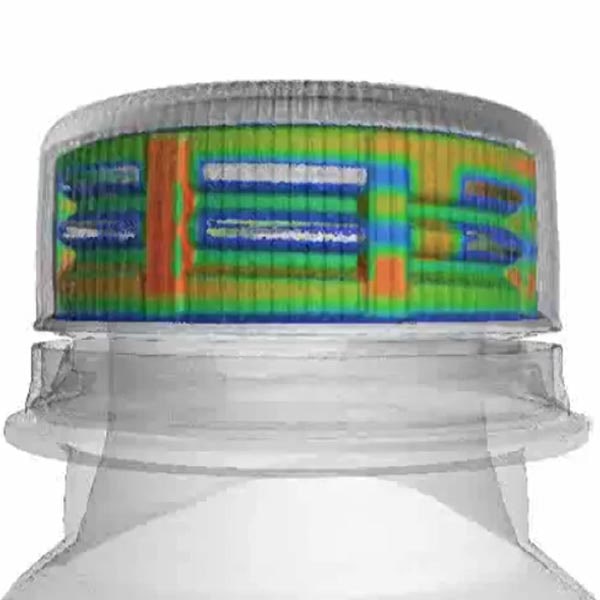
Learn more CT applications in various industries
Our webinars and articles helped many people learn what X‑ray CT is, how it works, and how it can help you in various areas. If you are wondering if this technique is for you or looking for an imaging technique that can help you solve your research and production problems, you can start here.

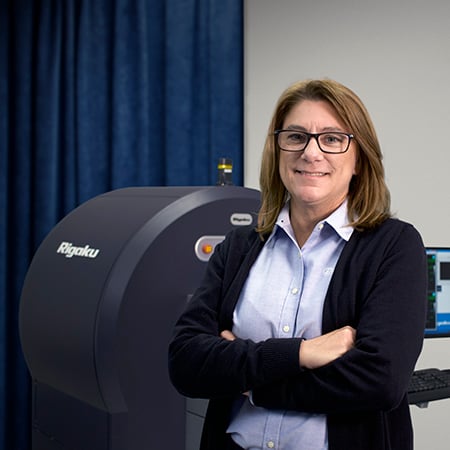
Contact Us
Whether you're interested in getting a quote, want a demo, need technical support, or simply have a question, we're here to help.

Subscribe to the X-ray CT Email Updates newsletter
Stay up to date with CT news and upcoming events and never miss an opportunity to learn new analysis techniques and improve your skills.
